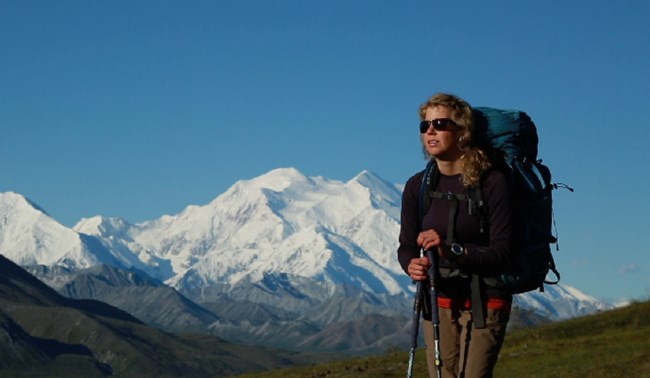
NPS Photo Through this five-part video series, you'll follow a group of seasoned hikers as they embark on a journey through Alaska wilderness. Walk through the dos and don’ts of backcountry camping, experience firsthand the wonder of Denali’s vast remote areas, and learn appropriate safety precautions that make the experience more rewarding.
Visit our keyboard shortcuts docs for details
Be sure you appreciate the vast size and scope of Denali’s backcountry, the diversity of its terrain, and the many moods of Alaska wilderness ... “We always call Denali the great humbler.” This is Chapter 1 in Denali's backcountry orientation video series.
Visit our keyboard shortcuts docs for details
Before you set out, make sure you plan well enough to come back safely, and leave the backcountry as pristine as you find it ... “Nobody tells you what to expect. You’ve got to figure it out. That’s what makes it so rewarding, too.” This is Chapter 2 in Denali's backcountry orientation video series.
Visit our keyboard shortcuts docs for details
Strive always to leave no trace while hiking in the backcountry ... “When you are stripped of everything except the physical elements, when it’s just strictly down to survival, it’s insane what you can push yourself to do, and who you become because of that.” This is chapter 3 of Denali's backcountry orientation video series.
Visit our keyboard shortcuts docs for details
At the end of a long day, look for an appropriate site to camp for the night ... “It’s like you kissed the land that night, and then you’re on your way.” This is chapter 4 of Denali's backcountry orientation video series.
Visit our keyboard shortcuts docs for details
Seeing a wild animal in the backcountry can be an incredible experience. But knowing how to behave in an encounter scenario might make all the difference. This is chapter 5 of Denali's backcountry orientation video series. |
Last updated: May 28, 2025
